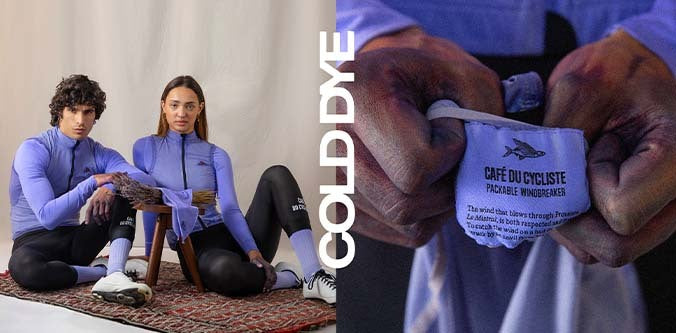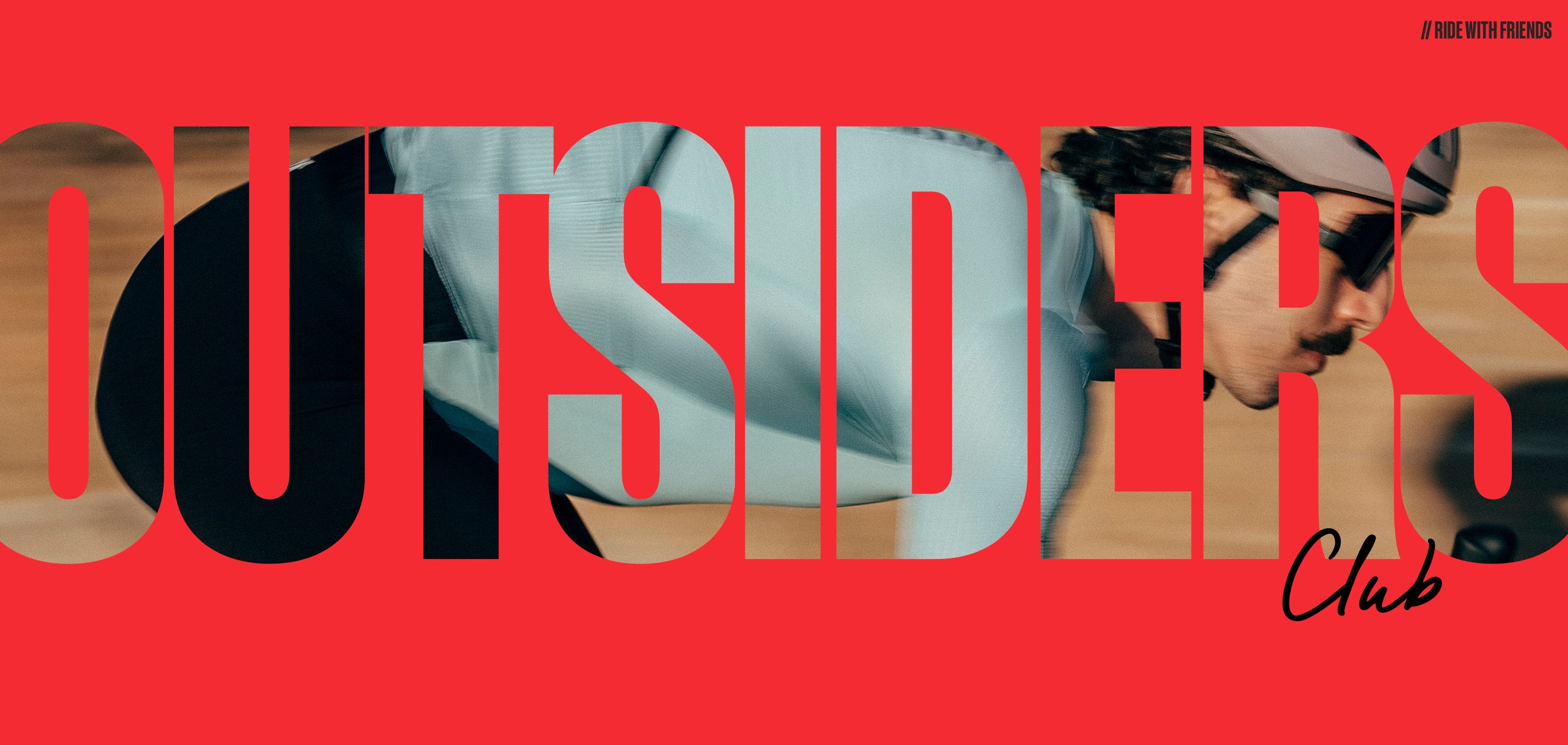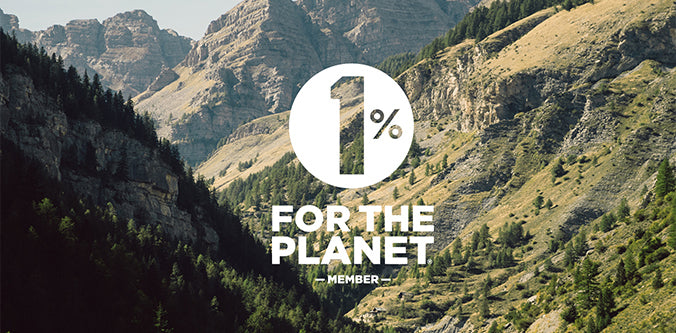Bunker Research Tour
“Unlike the mountains, which speak of an eternity, the bunkers speak of a moment – the instant of a terrible and decisive impact – a moment, moreover, that never arrived ” (Bunker Research)
Bunker Research, released earlier this year, is a book by two influential names in cycling : writer, Max Leonard, and photographer, Camille McMillan. It’s a work analysing the hidden history of modernism in the mountains. Those particular mountains happen to be where we ride , which might explain why a few months after publication we’re joining the bunker tour squad (consisting of author Max and touring specialist Stefan from Pannier.cc) in assembling and loading a fine gravel bike fleet with luggage to carry enough essentials for three days of extensive field research.

“Once you realise the sheer number of installations crowding the hills, it occurs to you that the road or track you are on which at first seemed innocent, was originally built by the military, that it too has played a part in the drama” (Bunker Research)
Those roads and tracks are known in France as Routes Stratégiques - roads built for military purposes to allow the passage of men, armoury, vehicles and all other military supplies required to defend the frontiére. And of course, those required to build the bunkers. For this trip they are our auto-routes, our quickest and our only options to get to the bunkers by bike. And they are mostly gravel.
Within 30 minutes of leaving the Café we are on the first route stratégique which climbs the backside of Mont Leuze and Mont Fourche to Col d’Eze. And from there we climb further to Fort de la Revère which pre-dates the bunkers by 50 years - so as historical tours go, we’ve managed (by design, of course….) to start at the beginning of the timeline. But the Fort is big, commanding and obvious. What we’re hunting is an altogether different concrete beast.

“Closer to the coast, the remains have been assimilated into the sprawl. They….nestle between the expensive villas of Cap Martin…You might pass them everyday and not give them a second glance” (Bunker Research)
We would guess 99.9% of tourists never notice the Gros ouvrage du Cap Martin. Yet it housed 7 officers and 353 men. Looking over the cloche at the sun-bathers packing the beaches along the bay that leads to the Italian border around the next headland is a strange and contrasting experience. It’s ironic that this coastal cloche is one that saw a lot of action during the Battle of Pont Saint-Louis in 1940.

“The Secteur Fortifé des Alpes-Maritimes became the most heavily guarded sector of all the Alps. It was also the most varied, reaching almost to the Col de la Bonette….Its architects and engineers had to be more inventive than in the flatlands of the north, where construction was more standardised, and they produced some extravagant forms in response to the challenges of the terrain” (Bunker Research)
That engineering involved converting many of the mountain peaks into underground batcave-esque labyrinths. The rounded weathered shapes visible on the surface are but the tips of, for want of a better phrase, a concrete iceberg. The Gros Ouvrage Sainte-Agnés (half-way up our beloved Col de la Madone) with it’s southern and northern facing cloches is a prime example of an installation inside an entire peak. We see it from a distance as we skirt behind Sainte-Agnés to join our next route stratégique across to the Col de Castillon. That particular military route is a great roller-coaster secteur of gravel that starts with a dive down and climb up two opposing sets of lacets traversing the valley between Cime de Bausson and Col de Verroux and then follows the contours of the mountain across to Col de Castillon.

“The basin around Sospel, one hump away from the sea, was especially heavily guarded. Here, gun turrets encircle the town, bunkers hide in crannies of rock and cloches stand guard in olive groves” (Bunker Research)
The Gros Ouvrage de Castillon looks directly eastwards across the valley, right into the eyes of the Italian fascist threat as it was (or was perceived to be) in the 1920s when the construction of the bunkers commenced. We don’t hang about too long in case the Italians attack (or maybe just in case we don’t get down to Sospel before the super-marche closes.)
Sospel has long been a trading town, situated on the Bevéra river with a bridge which was used to levy taxes on those wishing to cross. And it’s where we needed to stock up for the night’s camp on Monte Grosso above. Bread, cheese and, of course, wine. Always wine.

“Gradually, you sense the vast empty networks of tunnels below your feet and begin to imagine those deserted places busy with men, humming with life.” (Bunker Research)
Our next route stratégique is a cul de sac with one obvious purpose. To serve the huge installation on Monte Grosso which is our accommodation for the night. Kind of. Sleeping on top of a bunker - that was one of the main objectives of this trip.
The retractable, rotating, shell-firing turret (that strangely has been raised since Bunker Research last visited the site) provided the ideal sideboard. Sleeping on top is a bit of a cheat when you think of the long days, weeks, months that the soldiers spent underground waiting for the onslaught. The terra firma version of a sub-marine. We breathe the fresh air and only fear the attack of insects borne from the foliage that gradually wraps itself round the concrete. But the atmosphere is filled with the presence of the huge matrix of officers mess, soldiers’ barracks, artillery rooms, lifts and mini-railways for transporting ammunitions that lies beneath.

“When you cycle a mountain road it winds like a ribbon, wrapping itself across the contours as it climbs. Bunker research meant approaching the terrain more laterally: finding the sightlines across the hardest points to reach - understanding the Alpes-Maritimes as a military conundrum as well as a sporting playground.” (Bunker Research)
And so it was that we hiked our well-packed ‘lightweight touring’ bikes for 3 hours. Up 800m of vertical. The bikes didn’t feel so lightweight by the end. Through forests first, then out onto open peaks, then up through more trees which eventually reveal a vertical wall of long bush grass filled with the entire world’s population of grass hoppers. Antton the photographer eventually confesses his craving for a bucket full of blueberries from his native Finland. But smartly he does so only after we’ve scaled the highest peak. Will we make the Italian refuge on the other side of Col de Tende after this?

“Today, the whole of the Roya valley has the air of a no-man’s-land. It is neither France nor Italy, but rather just what it is” (Bunker Research)
A bucket full of Finnish blueberries wasn’t on offer in Breil-sur-Roya, so instead immersion in the river was the cure before the drag up the valley before the left turn up towards Casterino. Casterino? Which side of the border are we? Who cares when the climb to the town is so beautiful. It gives a sensation of the high-alps with its trees, silky smooth tarmac, switchbacks and the cascading river which is too much of a temptation to the tenkara fly-fisherman in our midst. He unwraps his rod from his seatpack, picks his spot on the appropriate boulder, and hunts his prey like a sniper in a bunker…. only much much different. We definitely aren’t going to make that Italian refuge.

“De Gaulle…used (t)his final assault on the Authion to make a play for the strategic Tende pass and, three days before victory in Europe, he achieved it. Tende became French for the first time in a hundred years only upon the signing of the Paris peace treaties in 1947.” (Bunker Research)
Our strategic play for Tende before nightfall was obviously going to fail due to aforesaid hiking and fishing activities. Shelter in Casterino? Not on this busy bank holiday weekend. Instead we find ourselves being greeted by the lovely people at the converted mining village of Vallauria, who insist that we sit down and eat before finding our rooms. Every accommodation should be like this.
It’s ironic that for our second night we find ourselves at what was another sub-terranean station, albeit fighting the rocks to mine lead. And it allows us to attack Tende early the next morning via possibly the best gravel road in the world.

The loop above Casterino is take your breath away stunning (and unbelievably is still used for cars when the Tende Tunnel is closed). Leaving civilisation, it’s as steep as it is scenic. The cascade is dry which dissapoints our fisherman. As we approach the top of the Casterino valley on the ridge at the Baisse de Peyrefique are Italian bunkers, built by Mussolini’s forces and noticeably different in appearnce from their French counterparts. These are more obviously out in the open, surrounded on this particular day by farmers chasing huge herds of cattle and grass tracks begging us to put our wheels on them. Pourquoi pas.
Beyond the ridge, the road flattens and curls itself round the mountain, with the final left turns revealing an epic side profile of Col de Tende as it winds it’s 65 hairpins up the mountain to the huge Fort Central and its surrounding protective bunkers.

“Whether you are driving, riding a bicycle or hiking along a marked path, you realise that you are under surveillance. The dead eyes above are tracking your progress, ready to fire down upon you.” (Bunker Research)
We arrive at the Col to find hordes of bank holiday tourists, with their cars and their sun visors crowded around the Chalet de Marmotte. People are actually sun-bathing on deck-chairs. At a 1,800m high ski chalet. But we have been places where they have not been and seen things that they have not seen. We are more than aware of the dead eyes above.
And the Fort Central is so big, we go riding in and through it. The hugh matrix of empty rooms amplifies the atmosphere created by these abandoned buildings. Their silence, as they say, is deafening.

“There are now no longer any soldiers who manned them still alive, so this bunker research captures them poised between memory and oblivion.” (Bunker Research)
After descending from the Fort Central, past its protective bunkers below we roll ever so smoothly on the valley floor towards Tende. On this central route between leading to Piedmont we spy an almost Route 66-esque machine gun post turned mini-visitor centre, with garish signs and manequins covered in army uniforms. We share a wry smile as we realise someone else noticed them too, and thought they’d make a few cents.
Footnotes: Photography - Antton Miettinen. Text - Max Leonard




















